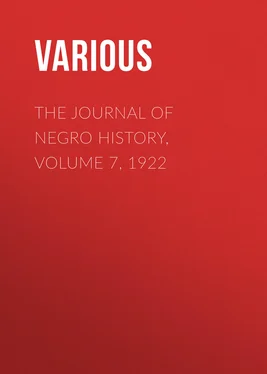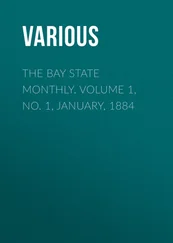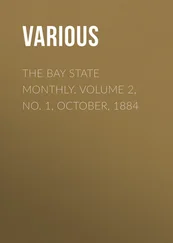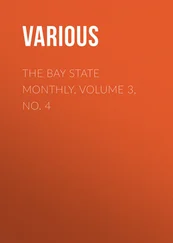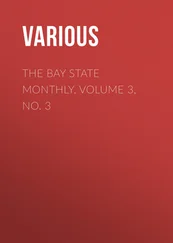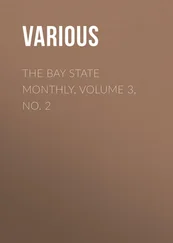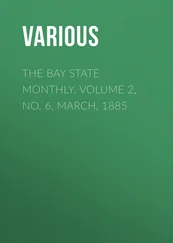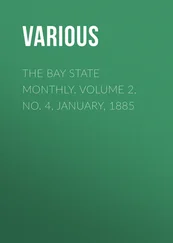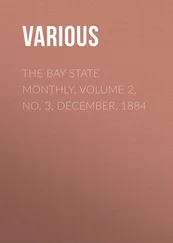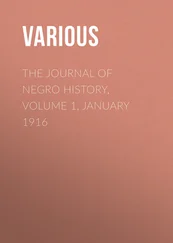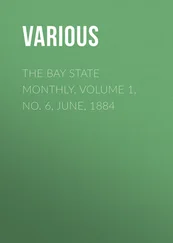Various - The Journal of Negro History, Volume 7, 1922
Здесь есть возможность читать онлайн «Various - The Journal of Negro History, Volume 7, 1922» — ознакомительный отрывок электронной книги совершенно бесплатно, а после прочтения отрывка купить полную версию. В некоторых случаях можно слушать аудио, скачать через торрент в формате fb2 и присутствует краткое содержание. Жанр: foreign_antique, periodic, История, foreign_edu, на английском языке. Описание произведения, (предисловие) а так же отзывы посетителей доступны на портале библиотеки ЛибКат.
- Название:The Journal of Negro History, Volume 7, 1922
- Автор:
- Жанр:
- Год:неизвестен
- ISBN:нет данных
- Рейтинг книги:3 / 5. Голосов: 1
-
Избранное:Добавить в избранное
- Отзывы:
-
Ваша оценка:
- 60
- 1
- 2
- 3
- 4
- 5
The Journal of Negro History, Volume 7, 1922: краткое содержание, описание и аннотация
Предлагаем к чтению аннотацию, описание, краткое содержание или предисловие (зависит от того, что написал сам автор книги «The Journal of Negro History, Volume 7, 1922»). Если вы не нашли необходимую информацию о книге — напишите в комментариях, мы постараемся отыскать её.
The Journal of Negro History, Volume 7, 1922 — читать онлайн ознакомительный отрывок
Ниже представлен текст книги, разбитый по страницам. Система сохранения места последней прочитанной страницы, позволяет с удобством читать онлайн бесплатно книгу «The Journal of Negro History, Volume 7, 1922», без необходимости каждый раз заново искать на чём Вы остановились. Поставьте закладку, и сможете в любой момент перейти на страницу, на которой закончили чтение.
Интервал:
Закладка:
There is still another case, in which the order of things is reversed, and this the most remarkable in the history of the South. In 1798 there appeared in southwest Mississippi a colored Baptist preacher, Joseph Willis, a mulatto, who being duly licensed was very zealous to exercise his gift as a minister. In 1804 he crossed the Mississippi River and began a work into which he put a half century of earnest endeavor. After preaching at Vermillion and Plaquemine Brulé for eight years, amidst hardships and bitter persecutions, unaided and alone, and sacrificing a small fortune in the struggle, he was able, with the aid of visiting ministers, to constitute the first Baptist Church at Bayou Chicot. Other churches, the fruits of his labors, soon sprang into being, and in 1818 the Louisiana Baptist Association was constituted, with these churches as a nucleus. Joseph Willis was pastor of the church at Bayou Chicot for a number of years. As moderator of the Louisiana Baptist Association he was honored and respected—indeed, beloved and spoken of as "Father Willis." That a Negro should have the honor of giving to Louisiana its first mixed Baptist church and of being the pastor of that church—that a Negro was the first moderator of Louisiana's first white Baptist association, 18 18 The Negro Year Book , 1918-1919, p. 236; Benedict, History of the Baptists , 376.
and rendered the denomination fifty years of service, causes us greatly to marvel in these days of race division and race antipathy.
The Negro members of white Baptist churches of this country were, as a rule, permitted to worship with their white brethren within certain fixed limits. The gap between them, however, tended to widen. Later they were allowed another hour for worship, with large bounds and privileges. Still later they were provided with all the privileges of the Baptist meeting house under the restrictions of the white churches to which they belonged. The master class gradually reached the position of separating the races in worship, but for the security of slavery they deemed it wise to hold the Negroes as members of the white churches.
It was argued that, in all nature, living creatures move instinctively in groups after their kind, and that the Negro and the white man, left to themselves, do the same thing, as is evidenced by the fact that the black slave was ever offending against the institution of slavery by holding religious services after his own liking where only his own people were present and shared in the devotion. In this manner the master justified himself in segregating his slave in the house of God and pointed to the Court of the Gentiles, in the Temple of Jehovah, in confirmation of the righteousness of his act. But for some reason the untutored black slave was never entirely at home in the white man's church, with its special place for Negroes. He knew that the master could be at ease in any part of his church edifice. It was all his and he moved about through its aisles as a free man, but the slave was limited in his privileges, and was counted a good man only as he kept within the limits assigned him.
When the Negroes in the white Baptist churches of the South became very numerous, services for their special benefit were held in the church edifices, usually in the afternoon, by the pastor and other persons who felt a deep interest in them. In these meetings the colored members of the church not only enjoyed the freedom of the place for the time being, but often listened with great satisfaction to the exhortations of one or more of their own brethren who spoke by permission from the floor and not from the pulpit platform. These Negro exhorters were encouraged to exercise a measure of spiritual oversight in the midst of their brethren and so help the church and pastor in caring for the flock. The segregated group, in a separate church edifice, meeting for worship at the same hours as the parent body, gave rise to the separate church altogether, with a white ministry. In this way many of the largest and most progressive Negro Baptist churches of the South had their beginnings amid the vicissitudes of life peculiar to a land of human bondage. The African Baptist Church of Richmond, Virginia, under the direction of Dr. Robert Ryland, the white president of Richmond College, is a case in evidence.
Still another type of Negro Baptist church arose where there was no parent church of white persons in control of the offspring. There were churches of this character in Virginia, Georgia, South Carolina, the British West Indies, Canada, and in far-off Africa, before the close of the eighteenth century. In these churches the members were of the black race. In Virginia and in Georgia churches of this class as well as others were admitted to membership in the oldest and best white Baptist associations, in which they at one time were given considerable attention. 19 19 By way of comparison, be it further remembered, that the founder of the African Methodist Episcopal Church was originally a member of the St. George Society, of Philadelphia, Pennsylvania, and he and others withdrew from that body of white persons in 1787; but it was not until 1794, that Bishop Francis Asbury constituted the Bethel A. M. E. Church at Philadelphia, which claims to be the oldest Negro Methodist church in the country. The Zion Church, of the African Methodist Episcopal Zion connection, New York City, was founded in 1796, while the first church of Negro Episcopalians, the St. Thomas Church, Philadelphia, was planted by Bishop William White in 1794. The Lombard Street Presbyterian Church, Philadelphia, the oldest organization of Negro Presbyterians in America, was constituted in 1807, and not until 1829 was the first church of Negro Congregationalists, the Dixwell Avenue of New Haven, Conn., constituted.
It is worthy of note that Negro Baptist churches of this type were the first Negro Baptist churches in all the land and preceded by many years the first Negro churches of other denominations in America.
These churches, moreover, soon established themselves in spite of opposition, for they were accepted by the Baptist associations. The Negro Baptist Church organized at Silver Bluff, South Carolina, in 1773 or 1775, probably had no such connection, nor did that of George Liele in Savannah, established not long thereafter; but the Negro Baptist Church of Williamsburg, Virginia, sought membership in the Dover Association in 1791 and was accepted. This church, according to John W. Cromwell, who is himself a Methodist, was founded in the year 1776. In 1815 the Gillfield Baptist Church, of Petersburg, Virginia, a Negro congregation, united with the Portsmouth Association, an organization of white Baptists. Shortly after doing so this church invited the association to hold its approaching annual meeting with the Gillfield Baptist Church. The "invitation was accepted and the church appointed a committee to rent stables and to buy feed for the delegates' horses." Richard Kennard, from whose church record we quote, adds: "A committee was also appointed to furnish blacking and brushes with which to clean the delegates' boots and shoes, and to see to the general comfort of the delegates." We agree with Mr. Kennard in the reflection: "At that age there did not seem to be as much prejudice among Christians or as much separation as since." 20 20 Richard Kennard's History of the Gillfield Baptist Church , p. 16.
The second step in the development was that of expansion abroad. There had been planted Negro Baptist churches, like the First African Baptist Church of Augusta, Georgia, in 1793, and Amos's Church at New Providence, Bahama Islands, British West Indies, in 1788. George Liele carried the work of the Baptists into Jamaica in 1784; and David George extended it to Nova Scotia and New Brunswick and finally into Sierra Leone about the same time. In this connection it may be remarked that because a Baptist church can arise and continue to exist as a self-originating, self-governing body without any consent or approval from without, the work of the denomination rapidly expanded. White ministers fully ordained to the ministry Negro Baptists, Negro Episcopalians and Negro Presbyterians and inducted them into pastorates, at a time when the Methodist Episcopal Church in America was not at first inclined to do so. This denomination, therefore, brought about that condition which resulted in the setting up of an independent African Methodist denomination under Peter Spencer in 1812, of another under Richard Allen in 1816, and still another under James Varick in 1820.
Читать дальшеИнтервал:
Закладка:
Похожие книги на «The Journal of Negro History, Volume 7, 1922»
Представляем Вашему вниманию похожие книги на «The Journal of Negro History, Volume 7, 1922» списком для выбора. Мы отобрали схожую по названию и смыслу литературу в надежде предоставить читателям больше вариантов отыскать новые, интересные, ещё непрочитанные произведения.
Обсуждение, отзывы о книге «The Journal of Negro History, Volume 7, 1922» и просто собственные мнения читателей. Оставьте ваши комментарии, напишите, что Вы думаете о произведении, его смысле или главных героях. Укажите что конкретно понравилось, а что нет, и почему Вы так считаете.
